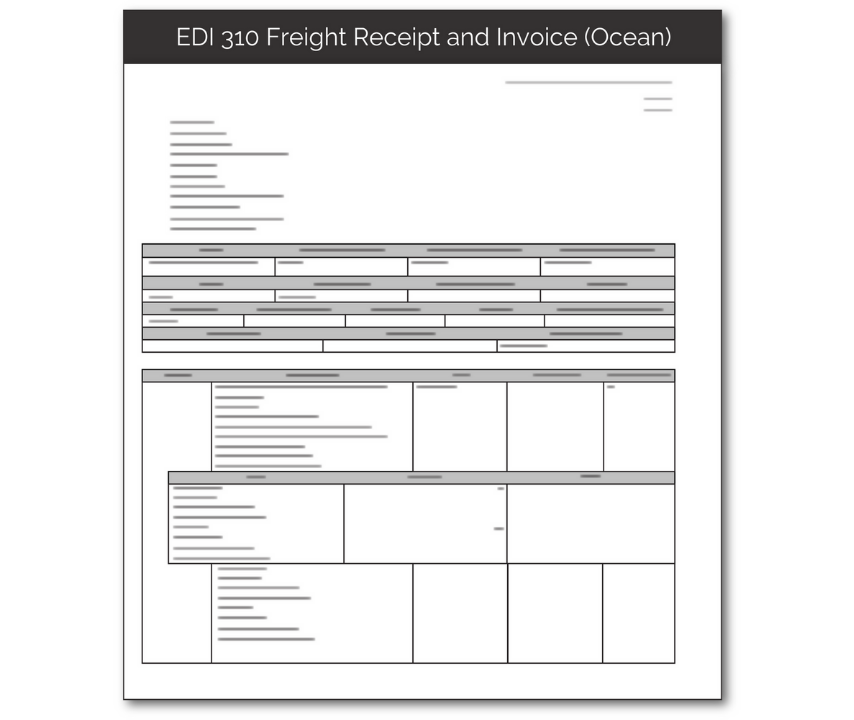EDI 310
Freight Receipt and Invoice (Ocean)

What is an EDI 310?
EDI 310, also known as a Freight Receipt and Invoice (Ocean), is an automated electronic document used to solicit payment for an oceanic freight shipment. EDI 310 is similar to the EDI 210 Motor Carrier Freight Details and Invoice, which is used for freight shipments, as well as the more general EDI 810 Invoice.
EDI 310 documents follow the x12 format set by the American National Standards Institute (ANSI), a not-for-profit organization that regulates EDI formats in the U.S.
What are the Essential Components of EDI 310?
A Freight Receipt and Invoice (Ocean) EDI transaction must contain specific details about a shipment, including information like:
- Purchase Order Number(s)
- Shipment and invoice number
- Item quantities, weights, dimensions, and descriptions
- Delivery details
- Ship from/to addresses
- Total amount due
- Payment terms

How do I Use EDI 310?
EDI 310 is used by ocean carriers to send a bill for a specific ocean freight. After the carrier arrives at port and delivers their cargo, they send EDI 310 to the paying party (the shipper or receiver), confirming the final details of the shipment, as well as the total amount due for the shipment. EDI 310 invoices include payment terms such as the acceptable payment method and due dates to streamline the payments process.
After receiving EDI 310, the retailer or grocer usually responds with an EDI 997 Functional Acknowledgement, followed by an electronic payment via ACH or similar methods.
What are the Benefits of EDI 310?
As a bill, it’s imperative that the information on the Freight Receipt and Invoice is accurate. Electronic Data Interchange, or EDI, pulls the correct information from other documents in the carrier’s business systems, such as the EDI 300 Reservation/Booking Request (OCEAN), automatically, helping to prevent errors that can lead to invoice disagreements. By automating the process, carriers can also prevent delays, so they can quickly realize revenue from each successful shipment.
EDI 310 may also include sensitive business details, such as contact information and payments information. Many integrated EDI software providers use security protocols, at-rest and in-transit encryption, and user-authentication to protect these details, making them a safer option than email, PDF, or faxed documents.
